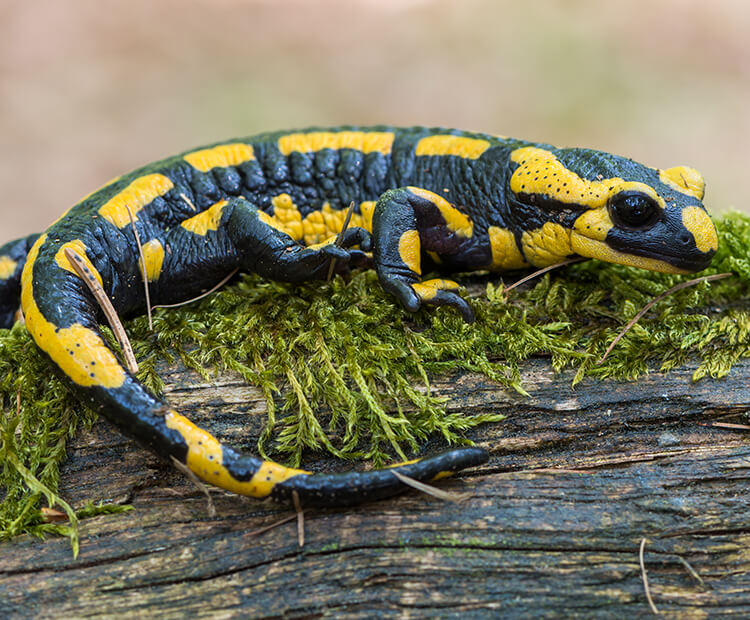Full Pane: Fire Salamander (Salamandra salamandra) (Germany, Federal Republic 2022)
Fire Salamander (Salamandra salamandra) (Germany, Federal Republic 2022)
04 August (Germany, Federal Republic ) within release For Youth 2022 : Amphibians goes into circulation Full Pane Fire Salamander (Salamandra salamandra) face value 10*(160+545) Euro cent
| Full Pane Fire Salamander (Salamandra salamandra) in catalogues | |
|---|---|
| Michel: | Mi: DE 3708KB |
Full Pane is vertical format.
Also in the issue For Youth 2022 : Amphibians:
- Stamp - Alpine Newt (Ichthyosaura alpestris) face value 85+40;
- Full Pane - Alpine Newt (Ichthyosaura alpestris) face value 10*(85+40);
- Full Pane - European Tree Frog (Hyla arborea) face value 10*(100+45);
- Stamp - European Tree Frog (Hyla arborea) face value 100+45;
- Full Pane - Fire Salamander (Salamandra salamandra) face value 10*(160+545);
- Stamp - Fire Salamander (Salamandra salamandra) face value 160+55;
Full Pane Fire Salamander (Salamandra salamandra) it reflects the thematic directions:
Amphibians are ectothermic, anamniotic, four-limbed vertebrate animals that constitute the class Amphibia. In its broadest sense, it is a paraphyletic group encompassing all tetrapods, excluding the amniotes (tetrapods with an amniotic membrane, such as modern reptiles, birds, and mammals). All extant (living) amphibians belong to the monophyletic subclass Lissamphibia, with three living orders: Anura (frogs), Urodela (salamanders), and Gymnophiona (caecilians). Evolved to be mostly semiaquatic, amphibians have adapted to inhabit a wide variety of habitats, with most species living in freshwater, wetland or terrestrial ecosystems (such as riparian woodland, fossorial and even arboreal habitats). Their life cycle typically starts out as aquatic larvae with gills known as tadpoles, but some species have developed behavioural adaptations to bypass this.
Animals are multicellular, eukaryotic organisms of the kingdom Animalia (also called Metazoa). All animals are motile, meaning they can move spontaneously and independently, at some point in their lives. Their body plan eventually becomes fixed as they develop, although some undergo a process of metamorphosis later on in their lives. All animals are heterotrophs: they must ingest other organisms or their products for sustenance.
alamanders are a group of amphibians typically characterized by their lizard-like appearance, with slender bodies, blunt snouts, short limbs projecting at right angles to the body, and the presence of a tail in both larvae and adults. All ten extant salamander families are grouped together under the order Urodela from the group Caudata. Urodela is a scientific Latin term based on the Ancient Greek οὐρά δήλη: ourà dēlē "conspicuous tail". Caudata is the Latin for "tailed ones", from cauda: "tail".



